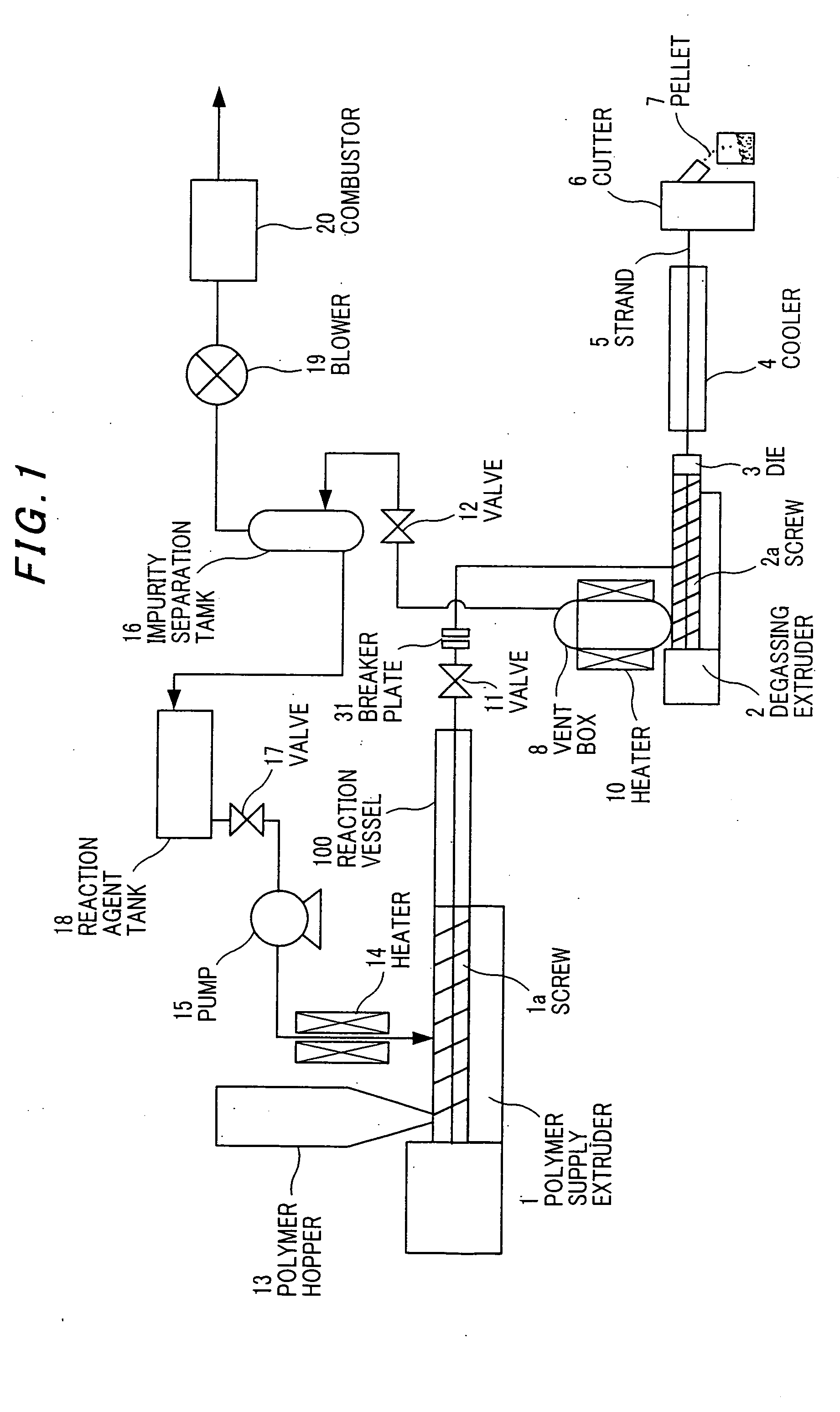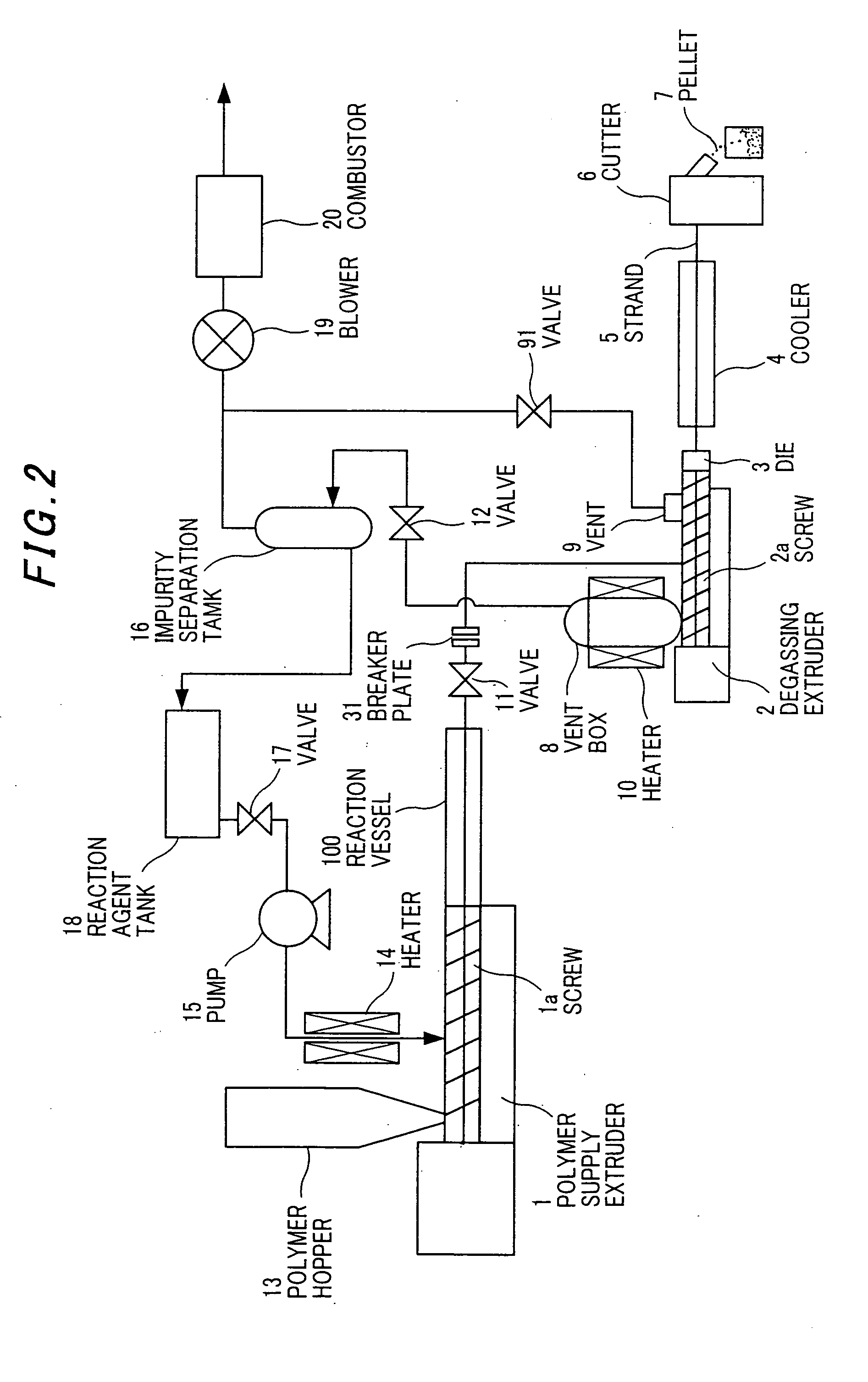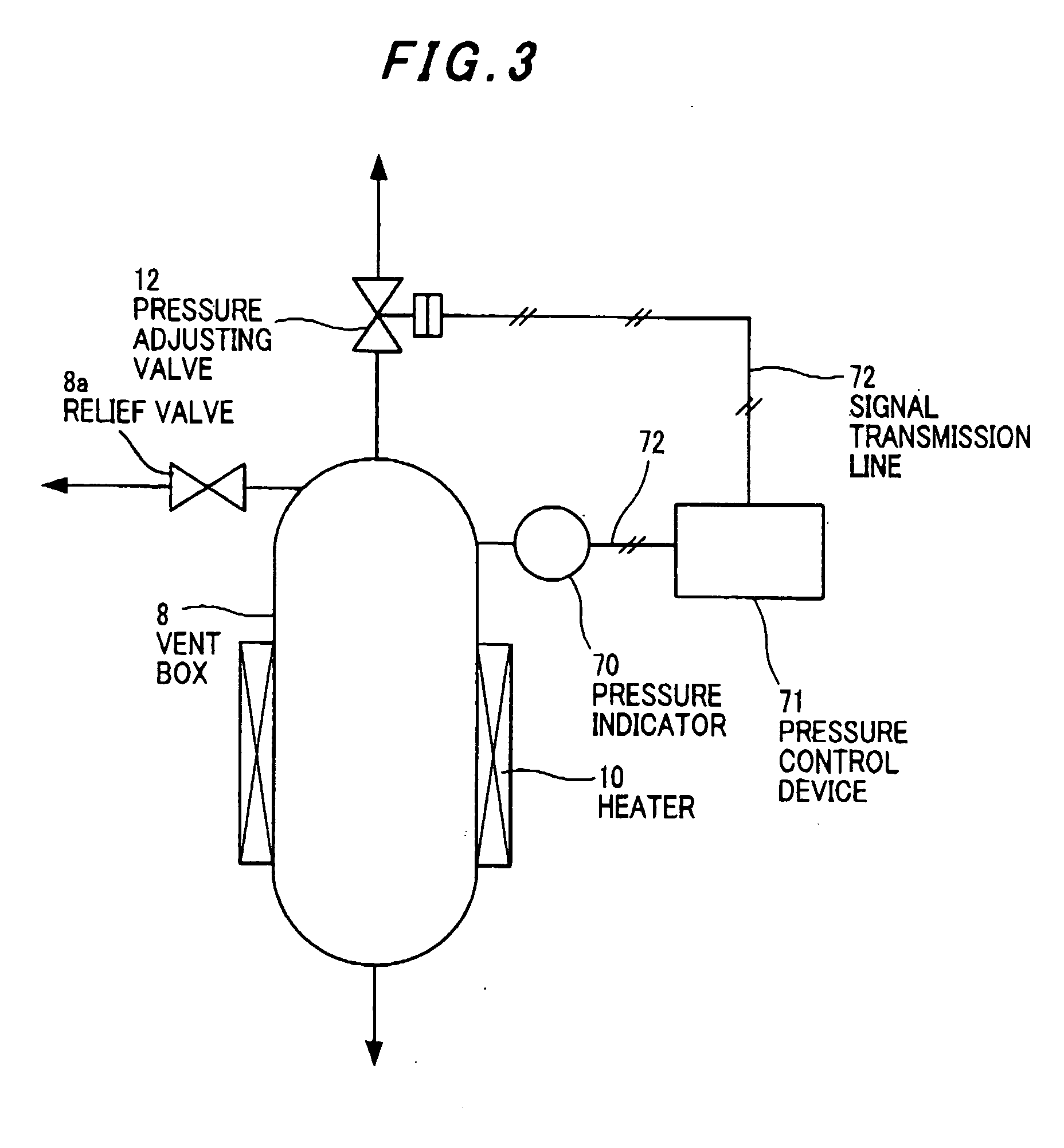Polymer treating method and apparatus
a polymer and treatment method technology, applied in the direction of chemistry apparatus and processes, manufacturing tools, chemical/physical/physical-chemical processes, etc., can solve the problems of inability to disclose an effective method for separating thermoplastic materials, difficult to apply to material recycling, and high cost of wastage disposal, etc., to achieve the effect of reducing the pressure fluctuation, facilitating the reaction with reaction agents, and sufficient reaction tim
- Summary
- Abstract
- Description
- Claims
- Application Information
AI Technical Summary
Benefits of technology
Problems solved by technology
Method used
Image
Examples
Embodiment Construction
[0065]FIG. 1 is a flow diagram showing a cross-link cutting treatment apparatus for cross-linked polyethylene in the preferred embodiment of the invention.
[0066] Referring to FIG. 1, cross-linked polyethylene being pelletized is put through a hopper 13 in a polymer material supplying extruder 1 (cylinder diameter of 33 mm, L / D=50) . On the other hand, ethanol as a reaction agent necessary for the reaction is supplied from a reaction agent tank 18 through a valve 17 to the polymer material supplying extruder 1 while being compressed by a reaction agent supplying pump 15 and heated by a reaction agent heater 14. The supply position of reaction agent is desirably located downstream of a position where cross-linked polyethylene is sufficiently densified in the polymer material supplying extruder 1. Thereby, the reaction agent can be prevented from leaking toward upstream due to evaporation thereof.
[0067] The polymer material supplying extruder 1 uses a double-shaft extruder that has t...
PUM
| Property | Measurement | Unit |
|---|---|---|
| Pressure | aaaaa | aaaaa |
| Flow rate | aaaaa | aaaaa |
| Volume | aaaaa | aaaaa |
Abstract
Description
Claims
Application Information
 Login to View More
Login to View More - R&D
- Intellectual Property
- Life Sciences
- Materials
- Tech Scout
- Unparalleled Data Quality
- Higher Quality Content
- 60% Fewer Hallucinations
Browse by: Latest US Patents, China's latest patents, Technical Efficacy Thesaurus, Application Domain, Technology Topic, Popular Technical Reports.
© 2025 PatSnap. All rights reserved.Legal|Privacy policy|Modern Slavery Act Transparency Statement|Sitemap|About US| Contact US: help@patsnap.com



